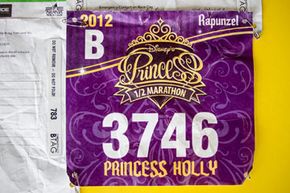Who wins in a foot race? Back in the old days, it was a fairly cut-and-dry affair. That guy who ran fast enough to spear an elk through the ribs with a sharpened stick? He won. And that guy with the limp who wound up in the belly of a saber-tooth cat? You guessed it: He came in dead last.
Today's runners are different animals, however. Those ancient, ferocious felines are extinct, so instead we run from the ravages of a sedentary lifestyle and pursue that worry-free taste of clarity that comes with physical exertion.
Advertisement
But hey, all that healthy, new-age crap aside, we still want to know how we rank. Did we breach the top 10 percent in last weekend's 10K? What exactly were our splits? Did we at least beat out that jerk from work with the toe shoes?
Since major running events typically attract hundreds and thousands of runners, organizers have to depend on something other than pen, paper and a stopwatch to clock everyone's time. The 1990s saw the rise of personal timing devices, usually affixed to each runner's shoelaces, and the technology continues to evolve, increasing the speed and reliability of race results with each new design.
The ChronoTrack Systems D-Tag is just such a shoelace tracking gizmo -- and the slip of sticky paper that slides around your lace works much like the smart chips that keep you from shoplifting clothes at the mall. Remember that My Little Pony T-shirt you fleetingly thought about stuffing in your bag? If you'd gone through with the plan, the smart tag would have set off an alarm when you passed between the sensors at the entrance to the store.
Both security smart chips and the D-Tag system depend on UHF radio-frequency identification (RFID) technology. During the course of the race, runners trample over special timing mats that contain antennas that receive the signal from each individual runner's tag. This allows the system to track hundreds, or even thousands, of competing runners and their individual RFID tags.
Now ChronoTrack Systems has another product on the market: the B-Tag. Fear not, barefoot runners! This number doesn't go on your laces, and your wrists and arms remain free for your normal selection of watches, heart-rate monitors and MP3 players. You wear this little number right on your chest.
Advertisement



